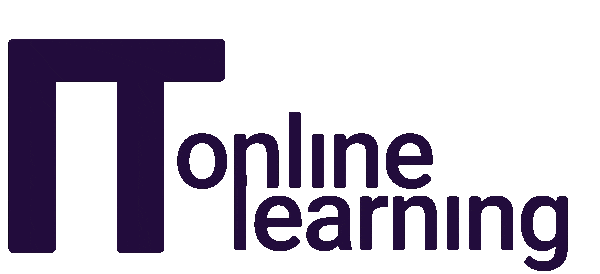If you are looking to improve the way you carry out processes in your business and change the way things work, Lean Six Sigma may be an ideal option.
Nearly forty years old, this methodology has helped thousands of organisations around the world speed up production, improve efficiency and help save money.
You may be wondering if it is right for your business and if so, how to go about becoming a qualified practitioner. If the answer to both of these questions is yes, we’ve put together this short guide to help you find out more about Lean Six Sigma.
The history of Lean Six Sigma
Lean Six Sigma was initially devised by Motorola in 1985. The methodology came into being as a way for the company to reduce manufacturing issues and increase efficiency.
In fact, ‘sigma’ is a measurement of variation. With Lean Six Sigma, you want to reduce the number of variations (or defects) in your processes, as well as eliminate any unnecessary steps. Sigma strives to achieve near-perfect output, high-quality and consistent improvement.
This methodology was initially used by companies in the manufacturing industry. However, Lean Six Sigma has now been adopted by a wide range of different sectors including IT, healthcare, marketing and banking.
If your business has processes in place, then the Lean Six Sigma methodology can be applied.
What is Lean Six Sigma all about?
Lean Six Sigma is about data gathering, looking at issues analytically and measuring data to see if the processes put in place are working.
It’s also about continuous improvement. Once a problem has been resolved, it still needs to be monitored to see if there is a better, more efficient way of carrying it out.
Lean Six Sigma requires buy-in and commitment from everyone in the organisation, from the Managing Director to those on the shop floor. Everyone across the company needs to be aware of what is being done and how even the smallest changes can have a significant impact.
A good project manager skilled in the Lean Six Sigma Methodology will rally people behind any changes that need to be made.
What is DMAIC?
DMAIC is one of the critical methodologies that Lean Six Sigma uses. It is utilised to find and eliminate defects in a process.
DMAIC stands for:
- Define – define the problem, as well as what and who is needed to solve it
- Measure – quantify the problem and establish a baseline so you can see how things are improving
- Analyse – identify what is causing the problem and how you can change or remove these issues
- Improve – solve the problem, implement the changes and check that any amends made are working
- Control – ensure that the problem does not return, and that the process continues to improve over time
The belts of Lean Six Sigma
Six Sigma has a lot in common with karate. Both require precision, dedication and knowledge.
With karate, you receive a new colour belt when you pass your exams. With Lean Six Sigma, although you do not receive a physical belt, the different grades are called ‘belts’!
People with no formal Lean Six Sigma qualifications are known as ‘white belts’. After this, there are three different levels of accreditation.
Lean Six Sigma Yellow Belt
This is a short introduction to the world of Lean Six Sigma – ideal for those who may not be managing change but are involved in supporting the people that are.
Lean Six Sigma Green Belt
The next step on the Lean Six Sigma ladder, a Green Belt, is a good starting point for project managers. This course introduces them to the problem-solving frameworks that Lean Six Sigma utilises.
This is a lifetime certification and does not need to be recertified.
Learn more about our Lean Six Sigma Green Belt course
Lean Six Sigma Black Belt
In karate, a black belt means that you have mastered all there is to know and are ready to lead others. The same applies to a Black Belt in Lean Six Sigma.
This advanced course teaches delegates how to drive change across the business as well as how to measure performance.
This certification needs to be renewed every three years.
You don’t have to complete Lean Six Sigma Green belt before you take on this accreditation, but it is recommended.
If you want to take things even further, you can study for a Lean Six Sigma Master Black Belt. This shows that you can not only lead others but are qualified to teach them in Lean Six Sigma methodology too.
Learn more about our Lean Six Sigma Black Belt course
Why is Lean Six Sigma so beneficial?
Lean Six Sigma has the following benefits for organisations.
- It improves productivity
- It improves quality
- It increases customer and stakeholder satisfaction
- It ensures compliance with government regulations
- It reduces waste
- It reduces operating costs
- It reduces risk
- It reduces employee turnover
It also has benefits for you too! Holding a Lean Six Sigma Qualification can increase your salary and help you get promoted to managerial roles.
A quality manager with a Lean Six Sigma Qualification can earn an average of £40k a year. Lean process managers can earn up to £53k, with validation engineers earning up to £65k!
Looking to start your Lean Six Sigma journey? Contact us today
We hope this guide has given you some insight into the world of Lean Six Sigma and how it works!
If you’re ready to learn the Lean Six Sigma methodology, ITonlinelearning is ready and raring to help you achieve this.
All of our courses are online, meaning that you can study for your accreditation around your work and home life.
As well as studying for each accreditation separately, we also offer the Lean Six Sigma package, meaning that you can get both your Green and Black Belt qualifications quickly and affordably.






